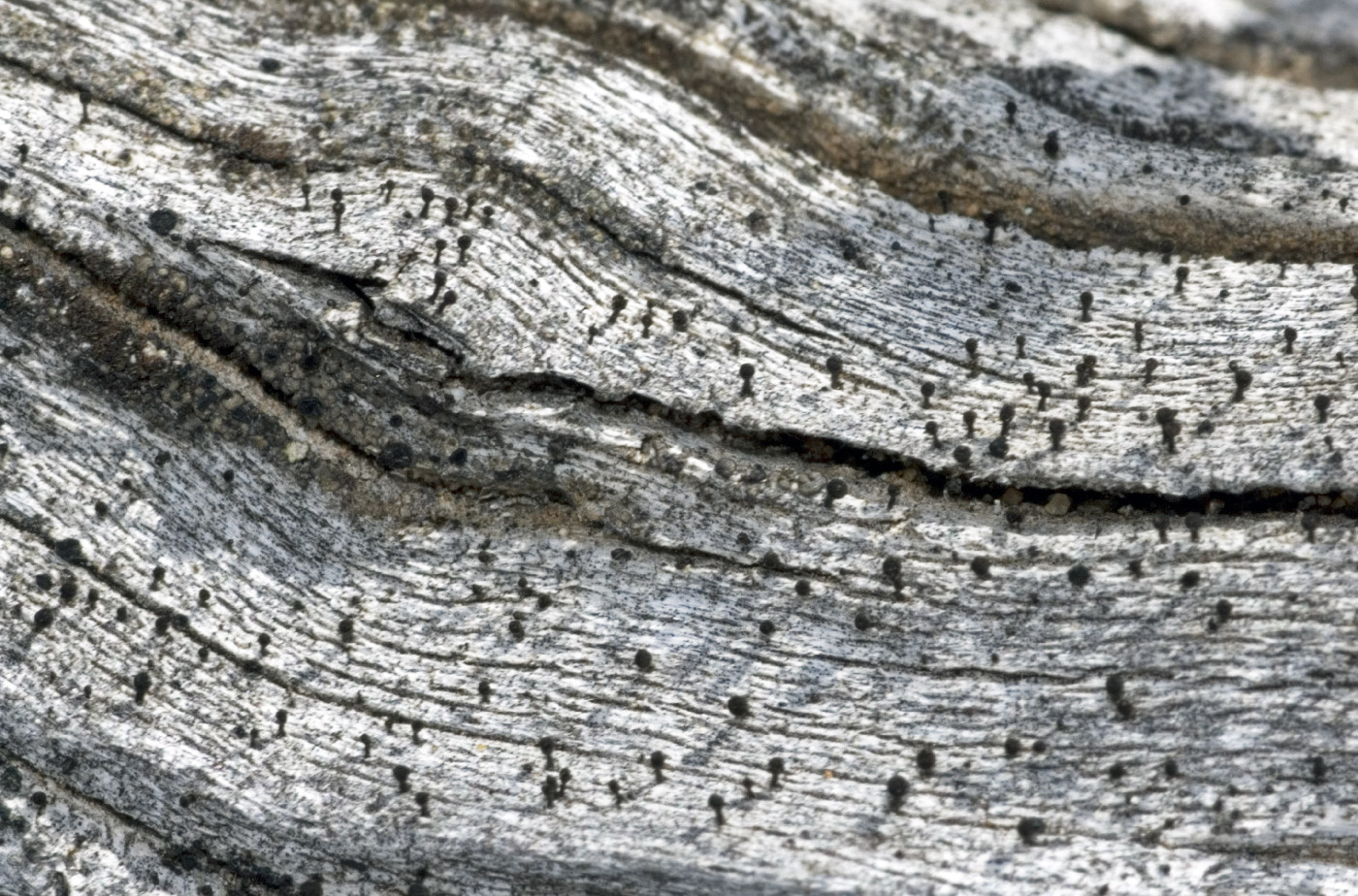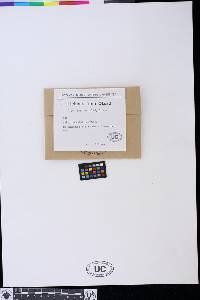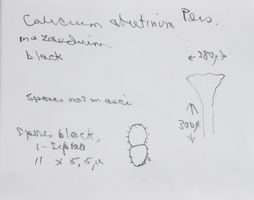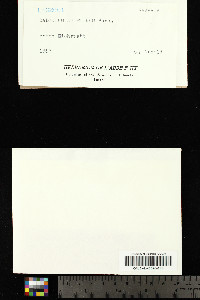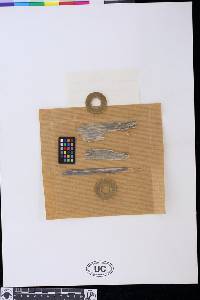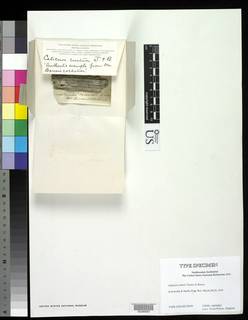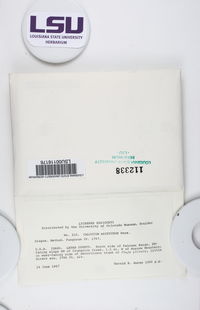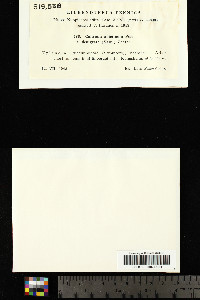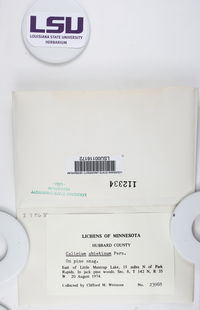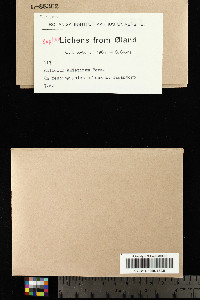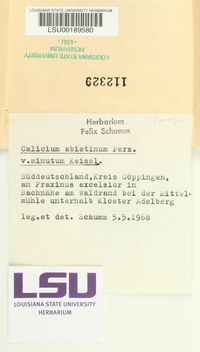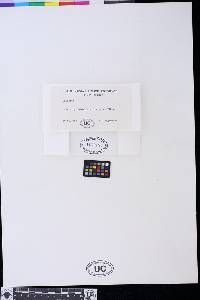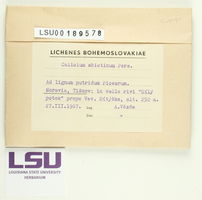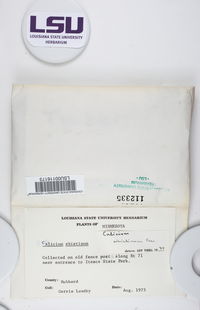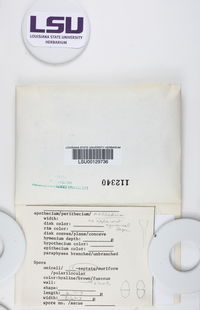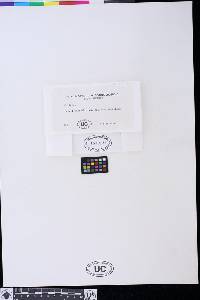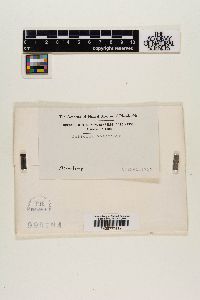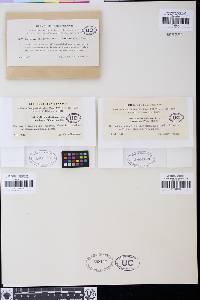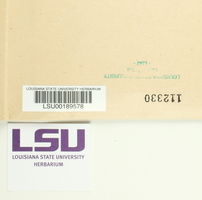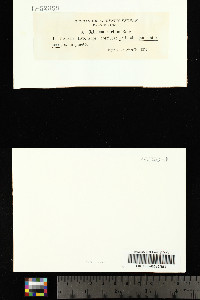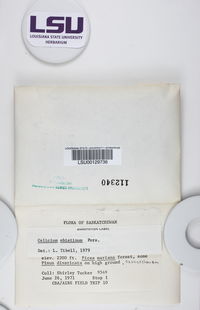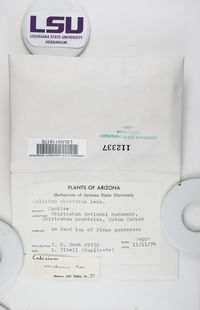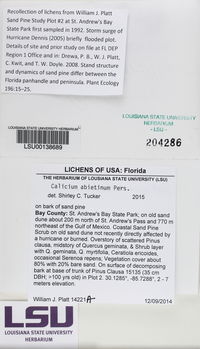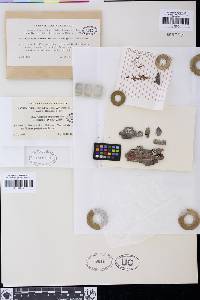
Consortium of Lichen Herbaria
- building a Global Consortium of Bryophytes and Lichens as keystones of cryptobiotic communities -
- Home
- Search
- Images
- Species Checklists
- US States: O-Z >
- US National Parks
- Central America
- South America
- US National Parks
- Southern Subpolar Region
|
|
|
|
Family: Caliciaceae
Black Stubble Lichen
[Calicium curtum Turner & Borrer ex Sm., moreCalicium curtum subsp. curtum Turner & Borrer ex Sm., Calicium curtum subsp. subcurtum Vain., Calicium curtum var. albosuffusa Vain., Calicium curtum var. albosuffusum Vain., Calicium curtum var. curtum Turner & Borrer ex Sm., Calicium curtum var. denigratum Vain., Calicium curtum var. denudatum Vain., Calicium curtum var. minus F. Wilson, Calicium curtum var. pumilum Kremp., Calicium curtum var. viridescens Vain., Calicium quercinum subsp. curtum (Turner & Borrer ex Sm.) Nyl., Phacotrum curtum (Turner & Borrer ex Sm.) Gray] |
Nash, T.H., Ryan, B.D., Gries, C., Bungartz, F., (eds.) 2004. Lichen Flora of the Greater Sonoran Desert Region. Vol 2. Life habit: lichenized Thallus: immersed Apothecia: not pruinose, 0.6-0.9 mm tall, 6-11 times as high as the width of the stalk stalk: in longitudinal section dark brown, consisting of densely intertwined, sclerotized hyphae; outermost part: +hyaline, with pale hyphae and a thin sheet of gelatinous material at the surface, often with brownish or olivaceous tinge, or shiny black, 0.08-0.13 mm wide capitulum: 0.21-0.28 mm in diam., lens- or slightly bell-shaped exciple: upper part of exciple often slightly translucent, pale, formed as a continuation of stalk tissue, with isodiametric to slightly elongated and anti-clinally arranged, heavily sclerotized cells; hypothecium: flat or slightly convex asci: 44 x 4-5 µm, cylindrical, with uniseriate spores ascospores: semi-mature spores without ornamentation; mature spores: ellipsoid, 11-15 x 5-7 µm, with irregular ornamentation of small pustules (minutely warted) giving rise to dotted appearance in light microscope, sometimes with a few irregular cracks Spot tests: thallus K-, C-, KC-, P-; apothecia I- Secondary metabolites: none detected. Substrate and ecology: on wood, especially conifers and oaks, also decaying stumps and logs, in fringe areas of forests in moderate to rather strong light World distribution: Europe, North, Central and South America, and Australasia Sonoran distribution: Arizona and Channel Islands, California. Notes: Calicium abietinum is recognized by its immersed thallus, the non-pruinose apothecia and the rather large spores, that have an ornamentation of minute warts. |
|
|
|
Powered by Symbiota

